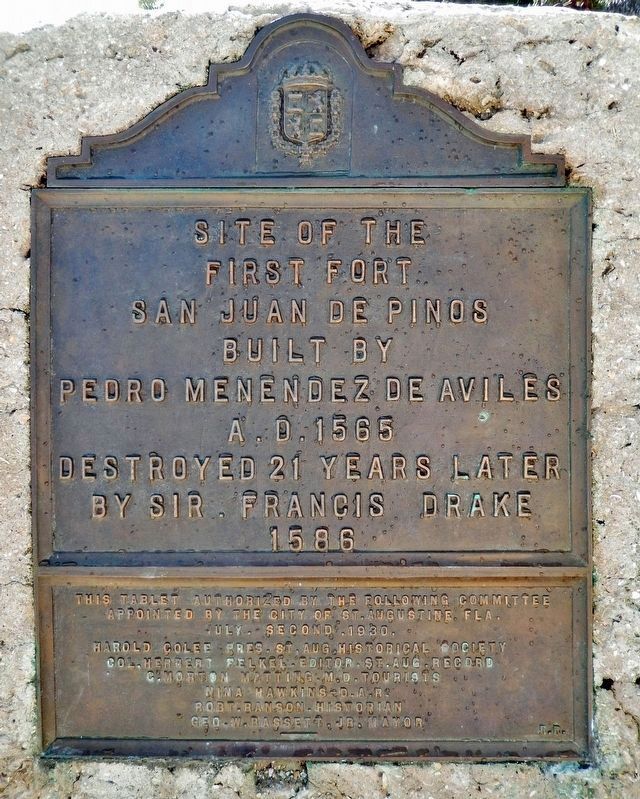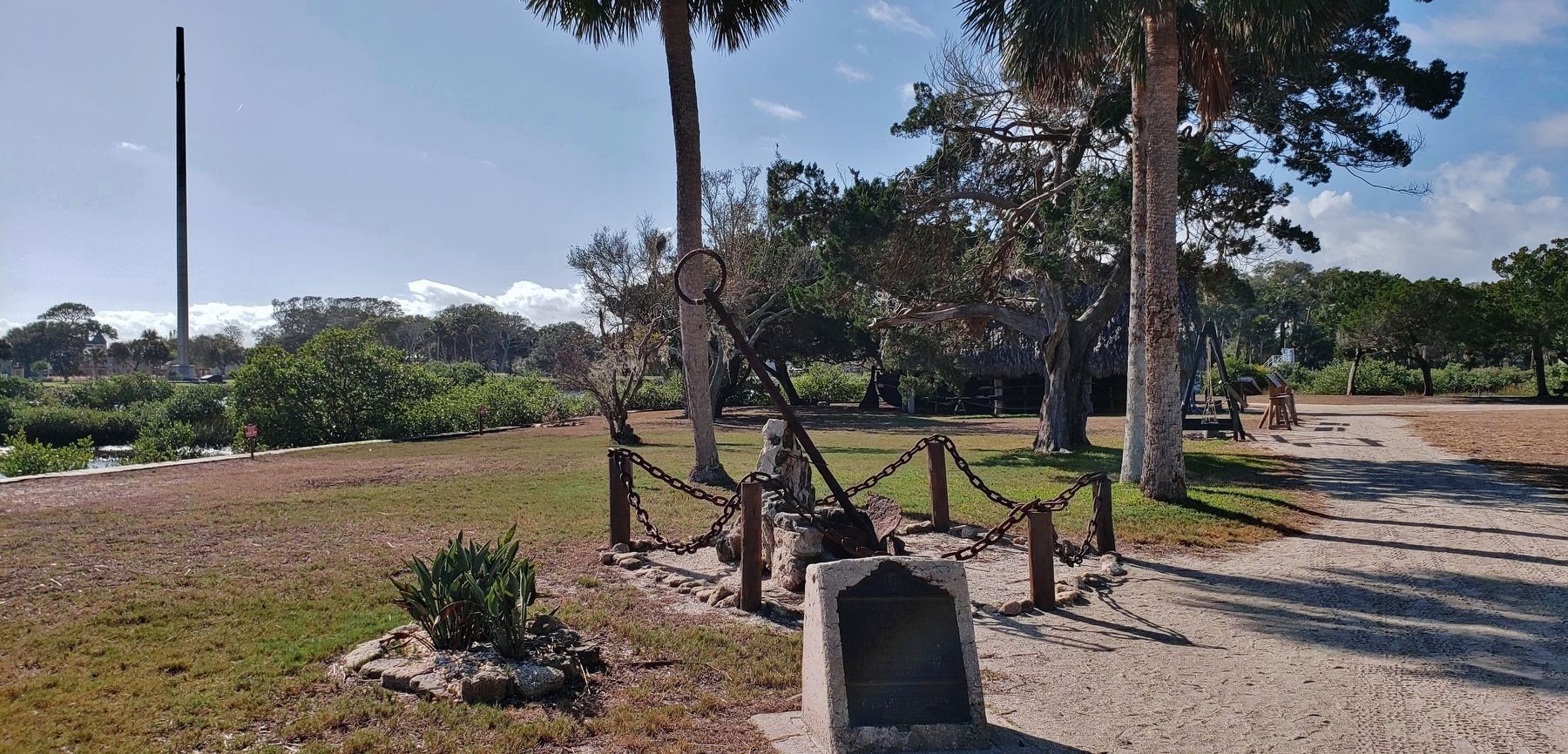St. Augustine in St. Johns County, Florida — The American South (South Atlantic)
Site of the First Fort San Juan de Pinos
Inscription.
First Fort
San Juan de Pinos
built by
Pedro Menéndez de Avilés
A.D. 1565
destroyed 21 years later
by Sir Francis Drake
1586
———————
This tablet authorized by the following committee
appointed by the City of St. Augustine, Fla.
July Second 1930
Harold Colee — Pres. St. Aug. Historical Society
Col. Herbert Felkel — Editor, St. Aug. Record
C. Morton Matting, M.D. — Tourists
Nina Hawkins — D.A.R.
Robt. Ranson — Historian
Geo. W. Bassett, Jr. — Mayor
Erected by St. Augustine Historical Society, St. Augustine Newspaper, City of St. Augustine Government, Daughters of the American Revolution (DAR).
Topics and series. This historical marker is listed in these topic lists: Colonial Era • Exploration • Forts and Castles • Settlements & Settlers. In addition, it is included in the Daughters of the American Revolution series list. A significant historical year for this entry is 1565.
Location. 29° 54.382′ N, 81° 18.818′ W. Marker is in St. Augustine, Florida, in St. Johns County. Marker can be reached from Williams Street east of Magnolia Avenue when traveling east. Marker is located along the interpretive trail in Ponce de León's Fountain of Youth Archaeological Park. Touch for map. Marker is at or near this postal address: 11 Magnolia Avenue, Saint Augustine FL 32084, United States of America. Touch for directions.
Other nearby markers. At least 8 other markers are within walking distance of this marker. First Muster of Militiamen in the Continental United States (here, next to this marker); 17th & 18th Century Cannons / 17o y Cañones del 18o siglo (here, next to this marker); Sentinels of the Spanish Coast (within shouting distance of this marker); The San Agustín: St. Augustine’s Workboat (within shouting distance of this marker); Continuing Archaeology (within shouting distance of this marker); Don Juan Ponce De Leon (within shouting distance of this marker); The Matchlock Arquebus (within shouting distance of this marker); Juan Ponce De León (about 300 feet away, measured in a direct line). Touch for a list and map of all markers in St. Augustine.
Related markers. Click here for a list of markers that are related to this marker. Ponce de León's Fountain of Youth Archaeological Park
Also see . . . A Timeline of St. Augustine 1512–1886. Exploring Florida website entry:
In 1586 Sir Francis Drake with twenty-one vessels arrived at St. Augustine; he sacked and burnt both the Fort San Juan de Pinos and the town. He robbed the treasury chest of two thousand pounds. St. Augustine at this period boasted of a hall of justice, a church, and a monastery. Fort San(Submitted on December 22, 2021, by Cosmos Mariner of Cape Canaveral, Florida.)Juan de Pinos was a crude structure built of logs and earth and without a ditch. The palisades were built of cabbage palmettos driven in the ground. The platforms were constructed by laying the bodies of pine trees horizontally on each other and filling intervening space with earth well rammed. Upon this platform were mounted fourteen brass cannon, of what caliber is not mentioned.Photographed By Cosmos Mariner, December 16, 20212. Site of the First Fort San Juan de Pinos Marker(looking south along interpretive trail • Matanzas River in left background)
"Florida Forts - St. Augustine" North American Forts website entry
Click for more information.
Credits. This page was last revised on May 3, 2023. It was originally submitted on December 22, 2021, by Cosmos Mariner of Cape Canaveral, Florida. This page has been viewed 433 times since then and 61 times this year. Last updated on May 2, 2023, by Carolyn Sanders of Plano, Texas. Photos: 1, 2. submitted on December 22, 2021, by Cosmos Mariner of Cape Canaveral, Florida. • Bernard Fisher was the editor who published this page.

